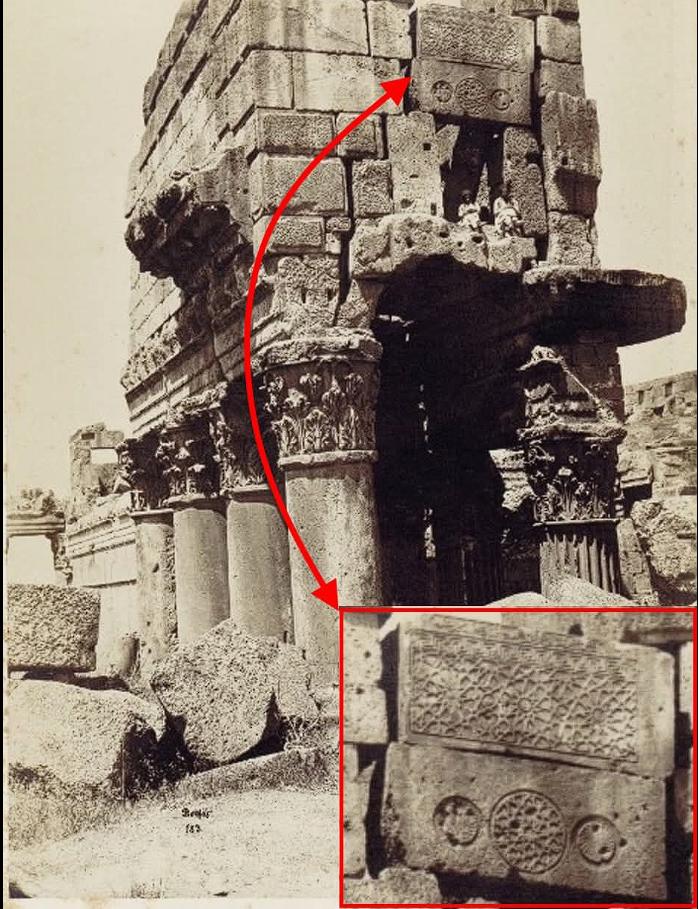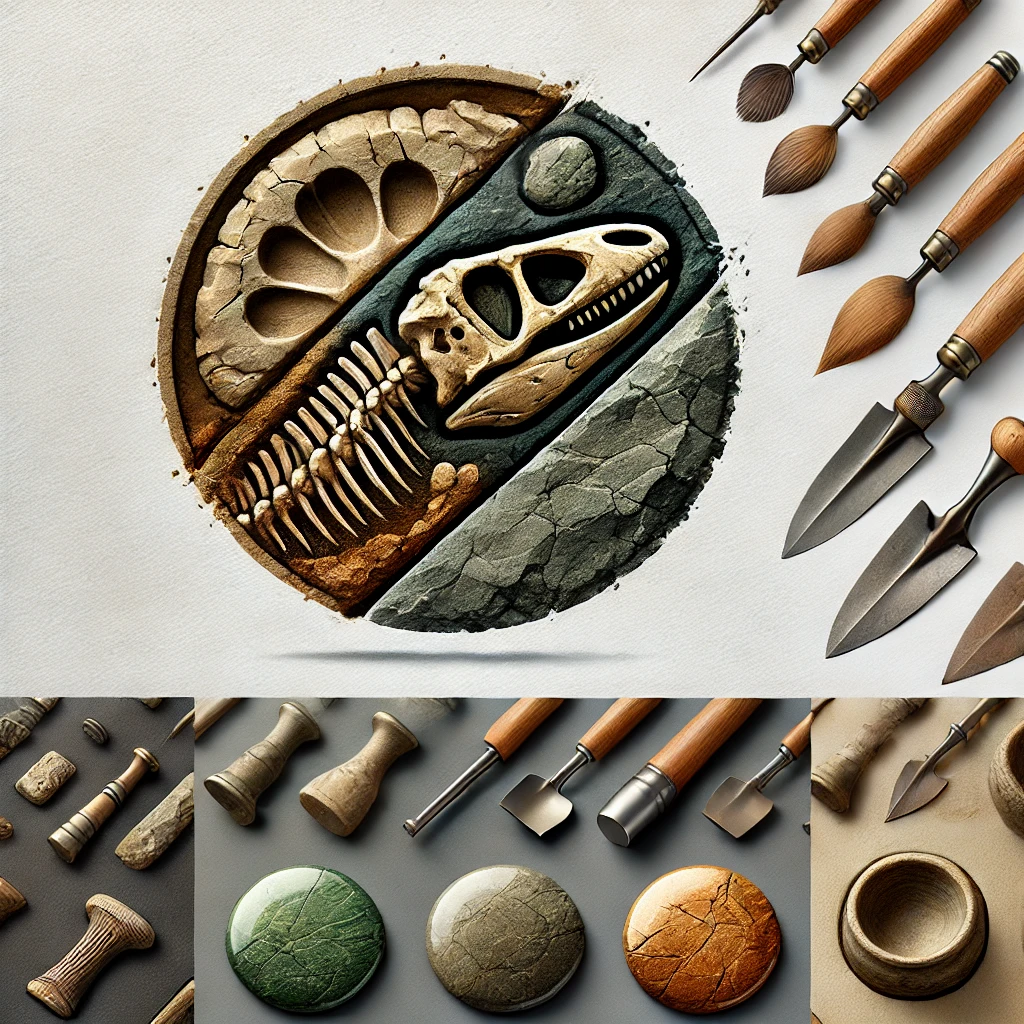In the Shadow of a Stone: Rediscovering Lost Civilizations Beneath Roman Ruins
On a quiet afternoon in the 19th century, a photograph captured more than just a ruin—it froze a mystery in time. In the image, a massive carved stone block lies displaced on the ground, far from its original perch atop a grand entrance. Weathered yet powerful, the block bears a story in its carvings—one that may challenge everything we thought we knew about the ruins we walk among.
Far from a mere decorative piece, this solitary stone radiates intention. Its face is adorned with spirals, interwoven grids, and circular motifs—patterns that speak not only of artistic mastery but of ancient cosmology. These aren’t isolated styles. They mirror the mandalas of India, the solar wheels of Mesopotamia, and sacred cosmograms across pre-colonial Africa. Somehow, these global echoes converge here, in a structure that scholars label “Roman” or “Hellenistic.” And that’s where the mystery begins.
Could it be that ancient civilizations buried under Roman ruins are whispering to us—not in language, but in stone?
The Monumental Mismatch

The Enigmatic Stone Block
It’s not unusual to find remnants of earlier buildings within Roman structures. But this stone block is different. The craftsmanship is beyond what the surrounding architecture reflects. Its geometric complexity stands in stark contrast to the comparatively modest Roman masonry nearby.
Symbolism Across Civilizations
The carvings aren’t just aesthetic. They’re symbolic. Similar motifs are found in the Indus Valley, Sumer, and even Nubia—cultures that predate classical Rome by centuries. Could this mean the Romans built atop a much older sacred site?
An Architectural Anomaly
In archaeology, context is everything. When a stone like this is out of place, it raises questions. Was it transported here? Or is this temple itself merely the latest in a series of cultural layers built upon one another?
Layered Time: The Concept of Cultural Palimpsests
What Is a Palimpsest?
Originally a term used to describe reused manuscripts, a palimpsest refers to something overwritten yet still carrying traces of its original form. In architecture, it points to how buildings evolve across generations of occupation and reconstruction.
Recycled Civilizations
Throughout the Mediterranean, it’s common to see newer empires repurposing older monuments. But often, this process isn’t just practical—it’s political. Taking over sacred spaces helped legitimize new powers, even as they buried the beliefs and aesthetics of their predecessors.
Eras Within Eras
What if we viewed ancient ruins not as singular moments in time, but as archives? Stones once sacred to an earlier people may have been absorbed by conquerors, not in reverence, but to erase or appropriate what came before.
Beyond Rome: Echoes of Lost Worlds
The Pre-Roman Builders
Long before Rome rose to power, the Mediterranean basin teemed with ancient builders: the Etruscans, Minoans, Hittites, and countless cultures now forgotten or folded into dominant historical narratives. Could the stone have belonged to them?
Sacred Geometry and the Stars
Many ancient cultures aligned their structures with celestial events. The spirals and circular motifs may not be decorative at all—they could represent star maps, solar calendars, or portals between worlds, encoded into stone.
Artisans Without a Name
We know Roman architects by name, but who carved this block? Its anonymous creators may have preserved philosophies lost to empire and time, their tools shaping not just stone, but memory.
Clues in the Earth: Rethinking Archaeological Assumptions
The Limitations of Conventional Chronology
Traditional archaeology often assigns dates based on the most dominant or visible layer. But this can overlook the deeper foundations—literally and figuratively—of what lies beneath.
Stratigraphy vs. Symbolism
Digging deeper isn’t just physical—it’s interpretive. A temple labeled “Roman” may sit atop Bronze Age foundations. Its reused blocks may come from a civilization we haven’t yet fully understood.
The Power of One Block
Sometimes, a single artifact can disrupt centuries of accepted history. This one stone—intricately carved and out of place—might be a keystone, not just structurally, but in reshaping our understanding of cultural continuity.
Reimagining History Through Stone
Walking Through Recycled Time
When we visit ruins, we’re often told one story—that of the dominant civilization that left the most behind. But what if the most meaningful truths lie in what was absorbed, reused, or hidden?
Honoring the Forgotten
To truly understand a site, we must honor all its layers. That means recognizing the artisans whose names we’ll never know, the beliefs etched into stone long before Roman expansion, and the cultural memory passed down through architecture.
A Call to Curiosity
This isn’t a call to reject history—it’s a call to deepen it. To embrace the possibility that our maps of the past are incomplete, and that stones themselves may be our oldest storytellers.
Conclusion: Listening to the Stones Beneath Our Feet
The solitary block, now resting silently in a 19th-century photograph, may seem like a footnote in history. But it’s more than that. It’s a question carved in stone. A challenge to dig deeper, look longer, and listen harder to the forgotten voices of ancient civilizations buried under Roman ruins.
In a world quick to label and categorize, perhaps the greatest wisdom comes not from what we know—but from what we’re willing to question. The next time you walk through the ruins of empire, remember: beneath your feet, another world may be waiting to be remembered.

CÁC TIN KHÁC
Mary Walton: The Forgotten Inventor Who Helped Clean Up America’s Cities
Tomb of Queen Nefertari in the Valley of the Queens, Egypt
Discover the Hypostyle Hall of the Temple of Hathor at Dendera
Venus de Losange: Unveiling the Mystery of a 20,000-Year-Old Paleolithic Icon